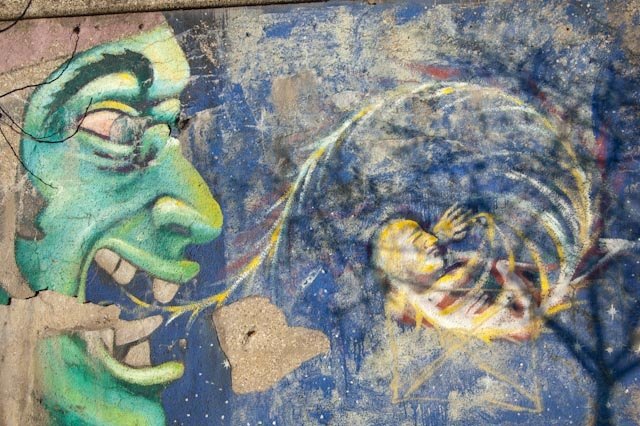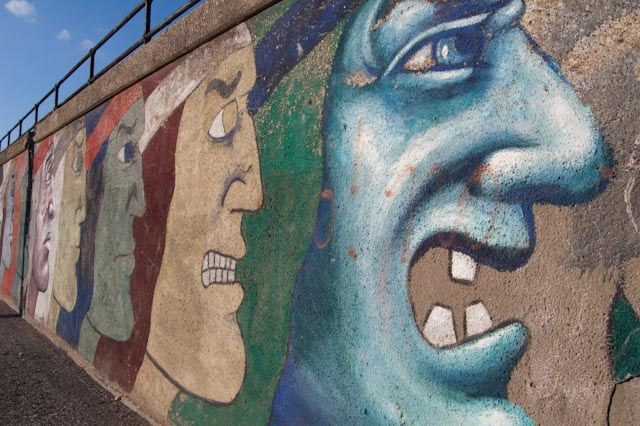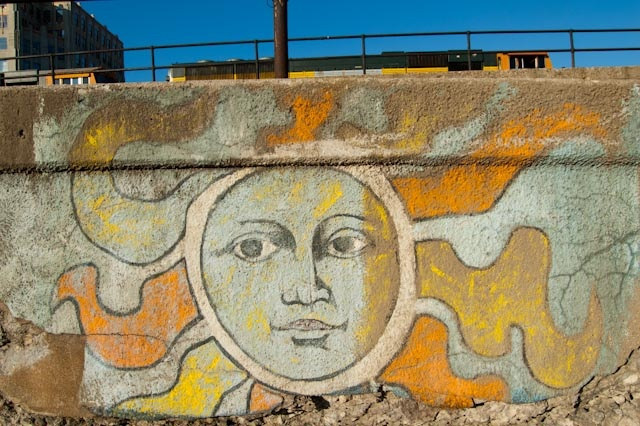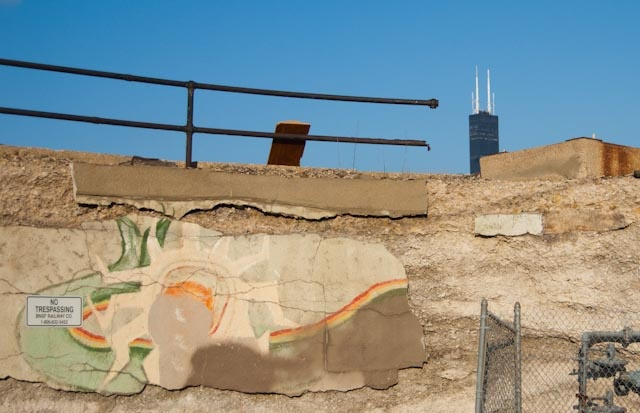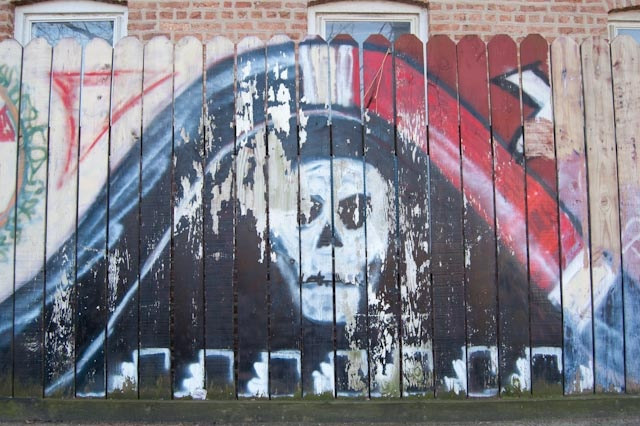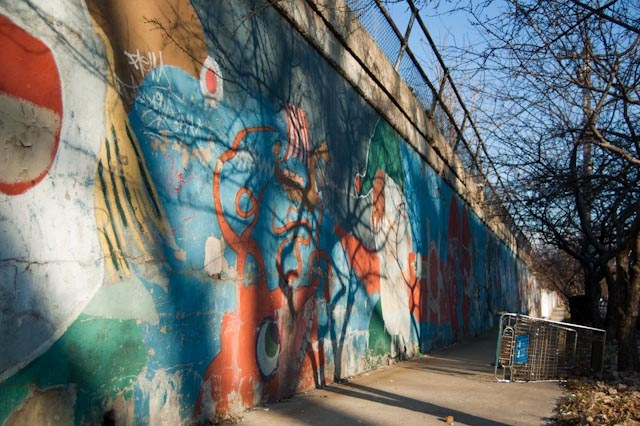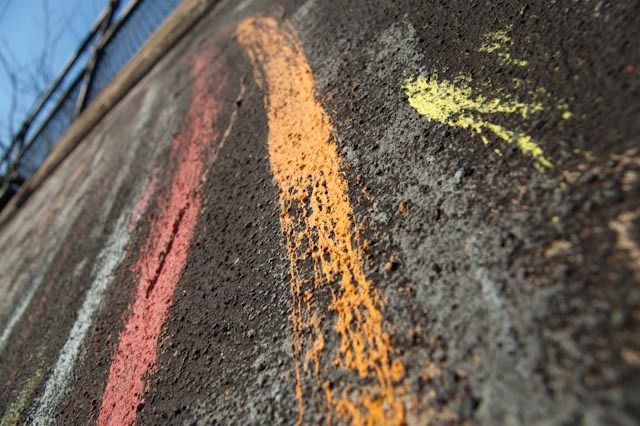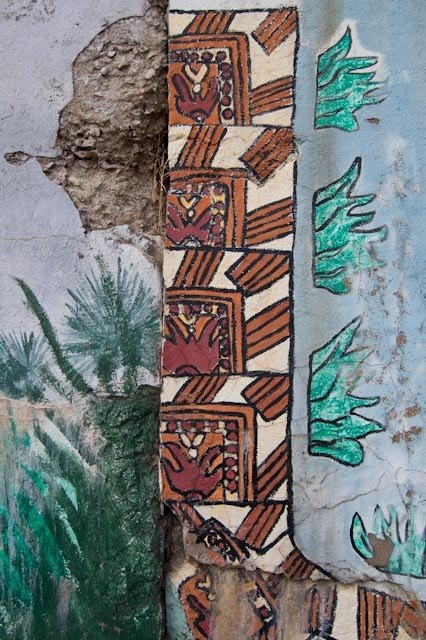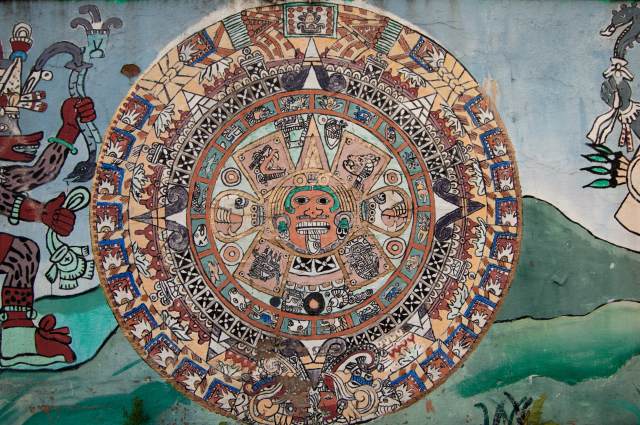Pilsen Murals: A Need To Change The World
By Laura M. Browning in Arts & Entertainment on Apr 1, 2010 6:00PM
Pilsen is gaining traction in Chicago as an arty neighborhood, with popular events like the 2nd Fridays Gallery Night (next one is April 9!). But the neighborhood itself is practically an outdoor museum, concrete and brick walls splashed with paint everywhere you look - and some places you might not think to look. With Spring upon us, we thought we'd make some suggestions on how to spend an afternoon in this colorful neighborhood. (And don't forget to bring your camera and add your photos to the Chicagoist Flickr Pool).
Take the 8 Halsted bus to 16th and Halsted, and start walking west. At first, the viaduct walls to your right are blank, but by the time you hit Carpenter Street, you see the first of the murals: the Virgin of Guadalupe, a soccer player frozen mid-kick, an eagle perched on a tree branch that appears to jutting from a real tree in front of the wall. Don't stop here - the best is yet to come.
Walking down 16th Street is to walk back more than 30 years, to the growing roots of community murals. A 1972 manifesto published by the civil rights department of the Amalgamated Meatcutters and Butcher Workmen of America explains why the mural movement - equal parts activism and art - got started, declaring that "their painting contradicts the ruthlessness of Chicago streets and asserts a need to change the world."
In 1976, artist Aurelio Díaz painted the oldest of these murals, Galería del Barrio. He directed students first, and then neighborhood residents, in their artistic efforts. Other artists worked with local community groups in the late 1970s to extend the murals east toward Halsted Street. Artists and activists came again to this viaduct in 1998, when "Project Pilsen," a highly charged collaborative mural symbolizing this neighborhood's resistance to a planned T.I.F. (tax increment financing), was initiated. These forlorn blocks have seen hundreds of gallons of paint, and probably many more dedicated citizens eager to change the world.
We'd argue that walking this museum between Halsted and Ashland is no less a meaningful experience than an afternoon at the Art Institute. And instead of an expensive museum café for your after-art coffee, you can head to some of Pilsen's great cafes. We asked around the Chicagoist office for some suggestions to top off the afternoon:
Laura: tres leches cake at Kristoffer's (18th and Halsted)
Sarah: best steak burritos, no contest: Los Comales (18th and Ashland); Café Jumping Bean (1439 W. 18th Street) has amazing sandwiches and personal focaccia pizzas, as well as free Wi-Fi.
Aaron: Café Mundial (1640 W. 18th Street) has good breakfast and brunch, and Nightwood (2119 S. Halsted) has great brunch and terrific pastries
Benjy: If you prefer to do your own cooking, La Casa Del Pueblo (1810 S. Blue Island) is a pretty impressive Mexican grocery store in Pilsen - one sometimes featured on Rick Bayless' TV show
